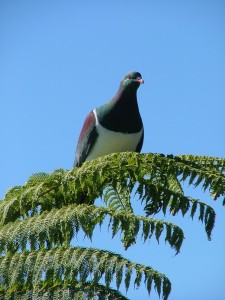New guide includes Māori names for 200 New Zealand birds
Thursday, 12 September 2013, 4:16 pm
Press Release: Auckland University Press
Auckland University Press
Media release
12 September 2013
New guide includes Māori names for 200 New Zealand birds
A new guide to New Zealand birds, by author Dr Paul Scofield and photographer Brent Stephenson (Auckland University Press) includes the most frequently used Māori names and commonly used alternative English or Māori names alongside the scientific names of the bird species found in New Zealand.
Birds of New Zealand: A Photographic Guide, publishing 16 September, is the definitive introduction to the identification and behaviour of this country’s extraordinary avian life. It covers the 365 species found in New Zealand but not every bird included has a commonly used Te Reo name.
After extensive research in early journals, histories and early dictionaries author Dr Scofield compiled nearly 1200 Māori names for 200 different species, most of which are rarely if ever used today.
Māori naming conventions for birds reflect the fact that Te Reo is a dynamic and evolving language but, unfortunately, usage has been subject to significant Pākehā pigeonholing. While Māori saw the same species as Pakeha, the importance of particular birds to daily life could be very different and affected how many names a species was given and whether the early accounts accurately recorded these names. Further, research shows that some species do not have individual species names recorded and it’s probable that some names have been lost.
“Traditional bird names are couched in practical language,” Dr Scofield says, “because the whole idea of naming such things is to describe the elements important to survival in a harsh land.
“Names are not only describing the birds but historically offered practical information such as whether the meat is tasty, what sex you’re looking at and the time of year at which the bird appears in the area. In some cases, chicks have different names to adults of the same species.”
Each of the ancestral waka’s descendants often use a different name for some species, for example, the native pigeon has four names: kuku, kukupa and kererū and parea; and usage often reflects lineage.
Birds of New Zealand also includes names borrowed from English such as peihana for Ring-necked Pheasant and makipai for Australian Magpie but Dr Scofield hopes that Te Reo as a modern language may create names for our introduced fauna that reflect a unique Māori ethos in the naming of the natural world. Indeed, he has recently started work with Drs Tom Roa and Hemi Whaanga at the University of Waikato and the Ngā Pae o te Māramatanga Centre at The University of Auckland looking at Māori naming conventions for birds and the way that our introduced fauna can be identified in Te Reo.
The taxonomic notes in Birds of New Zealand discuss the origins of the Te Reo names provided in some detail but do not include the mythology and tikanga surrounding the origin of these names, which is rich and whimsical but beyond the scope of the book.
loading...
loading...
Tags: Maori




Voices of our community